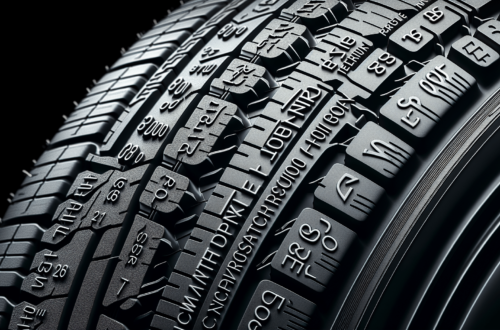Welcome to an informative article about the importance of tire rotation for enhancing handling and safety. By regularly rotating your tires, you can ensure that they wear evenly, providing better traction and improve overall vehicle performance. This simple maintenance task not only extends the life of your tires but also plays a crucial role in keeping you and your passengers safe on the road. Stay tuned to learn more about the benefits of tire rotation and how it can improve your driving experience. Have you been noticing uneven wear on your tires lately? Are you experiencing decreased handling and poor traction on the road? If so, it might be time to consider rotating your tires. Tire rotation is a simple yet crucial maintenance task that can significantly improve your vehicle’s handling and safety. In this article, we will explore the importance of tire rotation, how often you should do it, and the benefits it can bring to your driving experience. Let’s dive in and learn how you can enhance your handling and safety with tire rotation.

This image is property of images.pexels.com.
Understanding Tire Rotation
Tire rotation is the process of moving your tires from one position to another on your vehicle. This practice helps ensure that each tire wears evenly over time, extending the lifespan of your tires and improving your vehicle’s overall performance.
Why is Tire Rotation Important?
Tire rotation is important because it helps distribute the wear and tear on your tires more evenly. Without regular rotation, tires tend to wear out unevenly, which can lead to decreased handling, reduced traction, and a higher risk of blowouts or other tire-related issues. By rotating your tires regularly, you can keep them in optimal condition and ensure a safer driving experience.
How Often Should You Rotate Your Tires?
The frequency of tire rotation depends on several factors, including the type of vehicle you drive, your driving habits, and the type of tires you have. As a general rule of thumb, most experts recommend rotating your tires every 5,000 to 7,500 miles, or roughly every six months.
Factors to Consider
- Driving Habits: If you frequently drive long distances or regularly carry heavy loads, you may need to rotate your tires more often.
- Type of Vehicle: Front-wheel drive vehicles tend to wear out their front tires faster, so they may require more frequent rotations.
- Type of Tires: Some tire manufacturers recommend specific rotation intervals based on the tire’s design and construction.
Benefits of Tire Rotation
Regular tire rotation offers several benefits that can enhance your vehicle’s handling, performance, and safety. Let’s explore some of the key advantages of rotating your tires.
Extended Tire Lifespan
By rotating your tires regularly, you can ensure that they wear out evenly, which helps extend their lifespan. This can save you money in the long run by reducing the frequency of tire replacements.
Improved Handling and Traction
Even tire wear is essential for maintaining optimal traction and handling on the road. Rotating your tires can help distribute the weight of your vehicle more evenly, improving grip and stability in various driving conditions.
Enhanced Fuel Efficiency
Properly inflated and balanced tires can improve your vehicle’s fuel efficiency. By rotating your tires regularly, you can ensure that they wear out evenly, reducing rolling resistance and improving gas mileage.
Preventative Maintenance
Regular tire rotation can also help identify potential issues with your tires, such as alignment problems or suspension issues. By inspecting your tires during rotation, you can address these issues early and prevent more significant problems down the line.
Types of Tire Rotation Patterns
There are several tire rotation patterns commonly used by auto mechanics to ensure even wear on all four tires. The right rotation pattern for your vehicle depends on factors such as tire type, vehicle type, and driving conditions. Here are some of the most common tire rotation patterns:
Front-to-Back Rotation
In this pattern, the front tires are moved to the back, and the back tires are moved to the front. This rotation pattern is suitable for vehicles with non-directional tires and is recommended for front-wheel drive vehicles.
Cross Rotation
Cross rotation involves moving the front tires to the opposite sides of the rear axle and vice versa. This pattern is ideal for vehicles with directional tires and can help promote even wear across all four tires.
X-Pattern Rotation
The X-pattern rotation involves crossing the front and rear tires diagonally. This pattern is suitable for vehicles with different tire sizes on the front and rear axles.
Side-to-Side Rotation
Side-to-side rotation involves swapping the front and rear tires on the same side of the vehicle. This pattern is typically used for vehicles with different tire sizes on the front and rear axles.
Front-and-Rear Rotation
In this rotation pattern, the front tires are moved to the back, and the rear tires are moved to the front, similar to the front-to-back rotation. This pattern is suitable for vehicles with symmetrical tires that can be mounted in any direction.

This image is property of images.pexels.com.
How to Rotate Your Tires
While you can rotate your tires at home with some basic tools, it’s always best to have a professional mechanic perform the task to ensure it’s done correctly. If you prefer to do it yourself, follow these general steps for rotating your tires:
- Park Your Vehicle: Park your vehicle on a level surface and engage the parking brake for added safety.
- Loosen the Lug Nuts: Use a lug wrench to loosen the lug nuts on all four wheels, but do not remove them completely.
- Lift Your Vehicle: Use a jack to lift your vehicle off the ground, making sure to secure it with jack stands for safety.
- Remove the Wheels: Once your vehicle is lifted, remove the wheels one at a time and set them aside.
- Rotate the Tires: Follow the appropriate rotation pattern for your vehicle, moving each tire to its new position.
- Secure the Wheels: Place the wheels back on the vehicle and tighten the lug nuts in a star pattern.
- Lower Your Vehicle: Carefully lower your vehicle to the ground and remove the jack stands.
- Tighten the Lug Nuts: Use a torque wrench to tighten the lug nuts to the manufacturer’s specifications.
- Check the Tire Pressure: After rotating your tires, check the tire pressure and adjust it as needed.
Conclusion
Let’s Recap In conclusion, tire rotation is a simple yet essential maintenance task that can enhance your vehicle’s handling and safety on the road. By rotating your tires regularly, you can ensure even wear, extended tire lifespan, improved traction, and enhanced fuel efficiency. Understanding the importance of tire rotation, how often to do it, and the benefits it offers can help you make informed decisions about maintaining your vehicle. Whether you choose to rotate your tires yourself or have a professional do it, prioritizing tire rotation can pay off in the long run by keeping you safe and your vehicle performing at its best. So, the next time you notice uneven wear on your tires, remember that a quick tire rotation can make all the difference. Stay safe on the road and enjoy a smoother driving experience with properly rotated tires.





